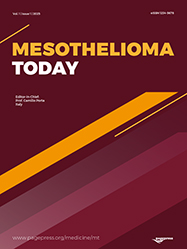
Submissions
Submission Preparation Checklist
All submissions must meet the following requirements.
- The submission has not been previously published, nor is it before another journal for consideration (or an explanation has been provided in Comments to the Editor).
- The submission file is in OpenOffice, Microsoft Word, or RTF document file format.
- Where available, URLs for the references have been provided.
- The text is single-spaced; uses a 12-point font; employs italics, rather than underlining (except with URL addresses); and all illustrations, figures, and tables are placed within the text at the appropriate points, rather than at the end.
- The text adheres to the stylistic and bibliographic requirements outlined in the Author Guidelines.
Articles
These articles should be 3,000-3,500 words long (main text). A structured (Background, Methods, Results, Conclusions) abstract up to 350 words long is required. The reference list should be selective, usually containing no more than about 35 selected references. Articles should be liberally illustrated with figures and diagrams (color encouraged). Although no strict upper limit of figures and tables is allowed, usually, up to 8 individual figures and tables can be included. Reports of clinical trials should adhere to the tenets of the CONSORT statement. A flow chart describing patients' progress through the trial must be provided. Reports of observational studies should adhere to the tenets of the STROBE statement. Reports of animal studies should adhere to the tenets of the ARRIVE statement.
Note that the main text of Original Articles is usually divided into the following sections and section order: Introduction, Results, Discussion, Conclusions, Materials and Methods, and References, Legends and Figures.
Reviews
Review articles should be up to 5,000 words long (main text). Longer articles may be acceptable in special cases but should be discussed with the Editor(s) before submission. An abstract of up to 350 words in length is required. The reference list should be selective, containing about 100 selected references. Articles should be liberally illustrated with figures and diagrams (colour encouraged). There is no strict upper limit of figures and tables allowed.
A review should clearly describe the search strategy followed (key words, inclusion, exclusion criteria, search engines). Confinia Cephalalgica allows two different types of reviews: narrative review or systemic review, the latter of which must follow the PRISMA Reporting Guidelines, and in the case of meta-analysis, the MOOSE Guidelines.
Editorials
They are short, invited opinion pieces that discuss an issue of immediate importance to the research community. Editorials should have fewer than 1,000 words total, no abstract, a minimal number of references up to 10, and up to 1 figure or table.
Letters
A Letter to the editor should be an article that raises issues of general interest to the broad readership of our journal. Letters to the editor may be edited for clarity or length and may be subject to peer review at the editor’s discretion. These papers should be up to 1,000 words in length, and no abstract is needed. The reference list should be selective, containing no more than 10 selected references.
Copyright Notice
PAGEPress has chosen to apply the Creative Commons Attribution NonCommercial 4.0 International License (CC BY-NC 4.0) to all manuscripts to be published.
An Open Access Publication is one that meets the following two conditions:
- the author(s) and copyright holder(s) grant(s) to all users a free, irrevocable, worldwide, perpetual right of access to, and a license to copy, use, distribute, transmit and display the work publicly and to make and distribute derivative works, in any digital medium for any responsible purpose, subject to proper attribution of authorship, as well as the right to make small numbers of printed copies for their personal use.
- a complete version of the work and all supplemental materials, including a copy of the permission as stated above, in a suitable standard electronic format is deposited immediately upon initial publication in at least one online repository that is supported by an academic institution, scholarly society, government agency, or other well-established organization that seeks to enable open access, unrestricted distribution, interoperability, and long-term archiving.
Authors who publish with this journal agree to the following terms:
- Authors retain copyright and grant the journal right of first publication with the work simultaneously licensed under a Creative Commons Attribution License that allows others to share the work with an acknowledgement of the work's authorship and initial publication in this journal.
- Authors are able to enter into separate, additional contractual arrangements for the non-exclusive distribution of the journal's published version of the work (e.g., post it to an institutional repository or publish it in a book), with an acknowledgement of its initial publication in this journal.
- Authors are permitted and encouraged to post their work online (e.g., in institutional repositories or on their website) prior to and during the submission process, as it can lead to productive exchanges, as well as earlier and greater citation of published work.
Privacy Statement
The names and email addresses entered in this journal site will be used exclusively for the stated purposes of this journal and will not be made available for any other purpose or to any other party.

